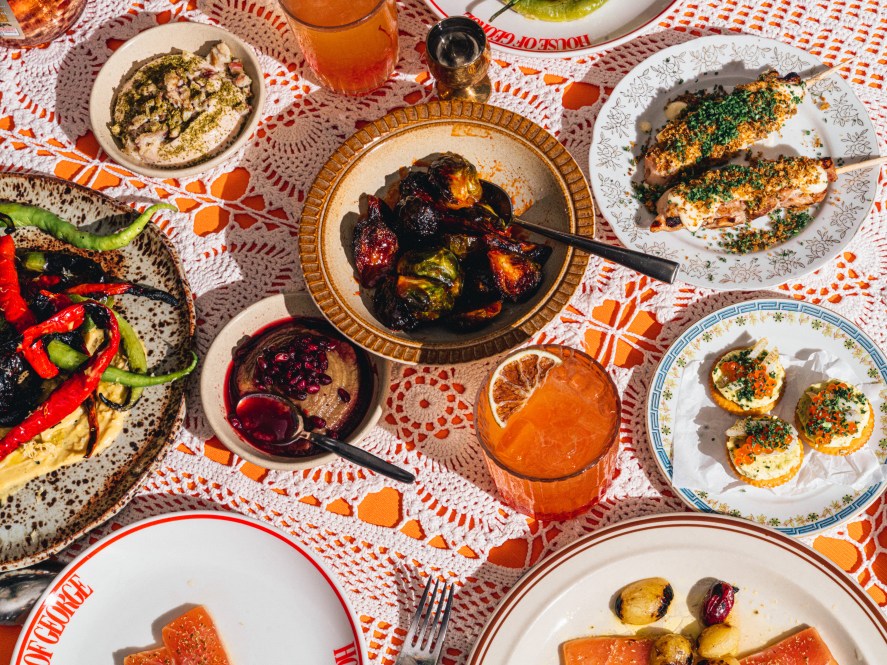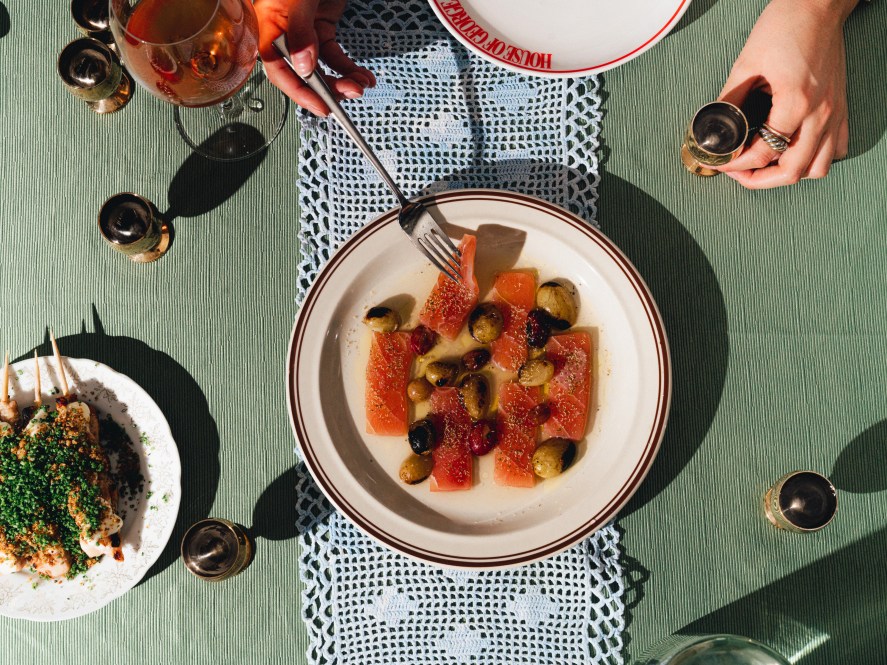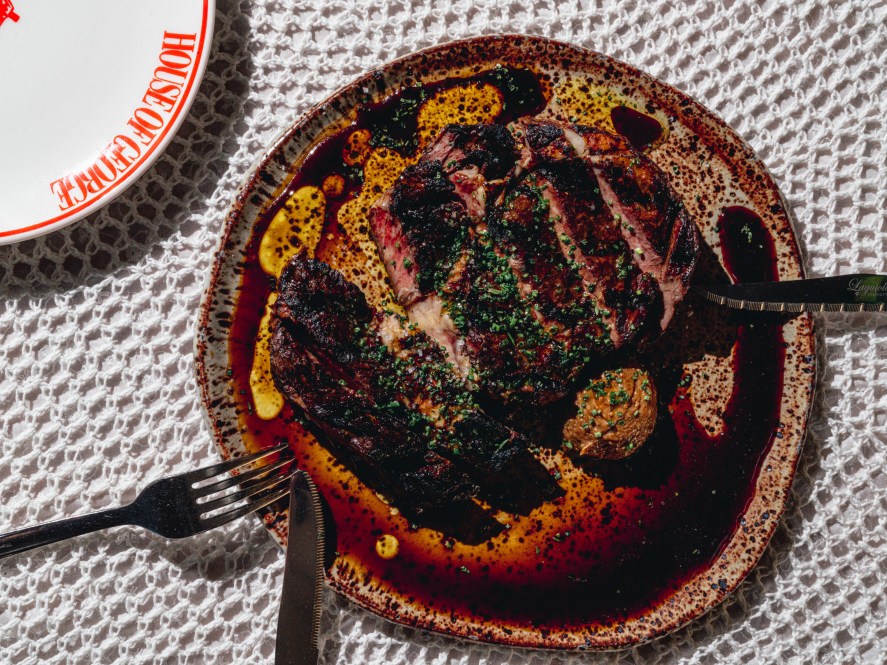Chef Savannah Sexton has experienced many sides of the multi-faceted industry we call hospitality. From working in hatted fine-dining restaurants to production-oriented pastry kitchens, it’s safe to say Sexton has worn many hats. After spending most of their career in the Sunshine State, Sexton has put down roots in Adelaide and is working for The Big Easy Group.
It’s here where they are serving up a taste of nostalgia with retro-inspired dishes that take diners down memory lane. Sexton reflects on their career thus far and cooking with memories front of mind.
The relationship between food and the land has always been an important one for Savannah Sexton. Growing up in Queensland’s food bowl Toowoomba with a horticulturist father meant produce was a key part of the chef’s childhood.
“The connection to where food grows and how it gets to our table was never too far away,” says Sexton. “I always understood how food got to the shops and how some things don’t grow all year.” Sexton’s mother is from South Africa, which means they were introduced to the techniques and traditions of the country’s cuisine. “South
Africa has braai culture and summer barbecuing was huge growing up,” they say.

Naturally, a culinary career was on the cards for Sexton, who was immersed in cooking and food from an early age. “I wanted to be a chef pretty much since I was able to formulate a thought about having to work for the rest of my life.”
Sexton’s first experience in a professional kitchen was at a Thai restaurant in Toowoomba owned by family friends. “I was just washing up and scrambling eggs for fried rice — that of kind of thing,” they say.
An apprenticeship soon followed for the chef, who continued the learning process in Toowoomba. “It was a unique apprenticeship [being] in a smallish town with lots of good farming and food connections,” they say. “I’m grateful for how it [reiterated] a lot of what I already knew about seasonality and how growing food worked.”
Sexton had their first taste of fine dining at Toowoomba’s two-hatted Veraison restaurant before moving into pastry at Brisbane’s Chester Street bakery. “I’d always been drawn to the pastry section,” admits Sexton. “I really appreciated the science and the art required to produce good dessert, bread, and pastries.”
The chef experienced a production-style kitchen with no set service time at Chester Street. “It was my first time working in a production-style environment,” they say. “I learned a lot there about time management, working clean, and doing high volumes to a high standard.”
But after a while, the buzz of service drew Sexton back into restaurants as a pastry chef at Brisbane’s two-hatted Stokehouse. It was a good challenge for Sexton to apply their newly minted pastry skills in a guest-oriented setting. “I still think a well-rounded dessert menu is still the hardest thing [to make],” they say. “I’m a believer in the first and last thing someone eats defining their experience because it’s what they remember.”

Three years passed at Stokehouse and Sexton moved from pastry chef to junior sous where they took on more management duties. “I learned a lot about how to look after a team, manage myself, and how to operate a kitchen,” says the chef. “Stokehouse was a big kitchen. We had about 19 chefs on the roster over the busy period, so it wasn’t a small place.”
Come March 2020, Sexton moved into a role at Alba Bar & Deli, where they worked in a shoebox-style kitchen serving a five-course feed-me menu and bar food. “It [the food] was rooted in Spain with a touch of New York … like if Brooklyn and Basque Country had a baby,” says Sexton.
Working solo in the kitchen meant Sexton focused on being resourceful and time conscious. “I learned a lot about being smart in menu design and making stuff as awesome and delicious as possible,” they recall. “But doing that with restricted space and equipment was also a very useful lesson to learn.”
Richard Ousby then approached Sexton about a role working across Cru Bar & Cellar, At Sixes and Sevens, and The Overflow Estate. Sexton again moved into a management position, but lockdown meant it was a short stint and ultimately inspired a move interstate.
South Australia was the destination of choice for the chef. “I sent a couple of venues my resume on a whim to be like, ‘Hey, just putting it out there, I’m keen to work’,” says Sexton. “In the same breath, I had one from Good Gilbert saying, ‘Do you want to come and be a head chef here?’ It was too easy for me not to go.”
10 days later, Sexton found themselves at Adelaide’s Good Gilbert working solo in a compact kitchen. The Euro-centric venue was something new for the chef, who was also adjusting to living in a new city. “I felt lost for the first couple of months, but the Adelaide hospitality community is pretty special,” says Sexton. “I was instantly embraced by every chef and restaurant I reached out to. Everyone who I asked for help helped me, which was amazing.”
Good Gilbert’s menu saw Sexton serve up nostalgia-inspired dishes, something they also did at Alba Bar & Dining and Stokehouse, too. “My first piece of nostalgic food was at Stokehouse and it was a version of a Splice,” they recall. “It was a dessert with pineapple and lemon myrtle finished with eucalyptus caramel.”
Sexton says they enjoy recreating dishes that evoke a reaction from diners. “I think nostalgia and memories are a lot of what makes food special for people … I think it’s a really important part of how we eat,” they say. “I think food is more delicious when it’s approachable and familiar.”

Inspiration largely comes from childhood experiences for Sexton, who has taken everyday dishes and created upmarket fare. “I love to [work with] classic Aussie things I ate as a teenager and stuff my grandma used to make me,” they explain.
An example is a riff on a chico roll with blood sausage at Alba Bar & Dining and a kabana gilda at Good Gilbert. “It was like a grown-up gilda and an ode to the kabana stick,” laughs Sexton. “We used mortadella and great cheese from the Adelaide Hills with ketchup made from the low-cut fruit growing in the carpark.”
Fast-forward to the present, and Sexton is working with Adelaide’s Big Easy Group. Their role covers food at CBD favourite The Stag Public House as well as the group’s latest venue House of George which rebranded from Yiasou George this year. Sexton describes the food offering at House of George as: “Euro disco. The menu is tight but concise with something for everyone to enjoy. It’s all familiar flavours and classic that complement our greater Mediterranean offer.”
House of George has provided a platform for Sexton to draw on their South African heritage, with the kitchen fitted out with an open-fire hearth. “The hearth is similar to many home braais across South Africa,” says Sexton. “Everything is getting a little kiss from the fire in some way or the other.”
The dessert menu features Sexton’s take on the South African dessert malva. “It’s South Africa’s version of sticky date except it’s made with apricot jam and is a very simplistic, wartime dessert,” says the chef. “We make a slightly fancier version of it in the restaurant where it gets cooked in the wood fire and served with vanilla gelato and ouzo butterscotch sauce.”
Sexton’s memory-oriented approach is channelled throughout most dishes on the menu — guests just might not know it. “There’s plenty of nostalgic elements hidden in there in a bit of a sneaky way,” says Sexton. Take a bite-sized snack, for example. “It’s a Ritz cracker with salt and vinegar butter and smoked whiting,” says Sexton. “It’s served with smoked trout and roe from Yarra Valley Caviar.”
The rest of 2023 is expected to be busy for Sexton, who has been invited to be a judge at the Australian Grand Dairy Awards. At House of George, Sexton and the team are also gearing up to launch a series of events that will see them collaborate with some of their favourite Australian venues. If the chef’s culinary resume is anything to go by, there’s no doubt the next chapter will be one for the memory books.
Sponsored Content

Discover Dairy Farmers’ range of shredded cheese
Sponsored by Bega

Beachfront Melbourne Club catering & restaurant opportunity
Sponsored by Future Food
Trending Now
Resources
Lorem ipsum dolor sit amet, consectetur adipiscing elit. Fusce ac ornare lectus. Sed bibendum lobortis...
Lorem ipsum dolor sit amet, consectetur adipiscing elit. Fusce ac ornare lectus. Sed bibendum lobortis...
Sign up for our newsletter
